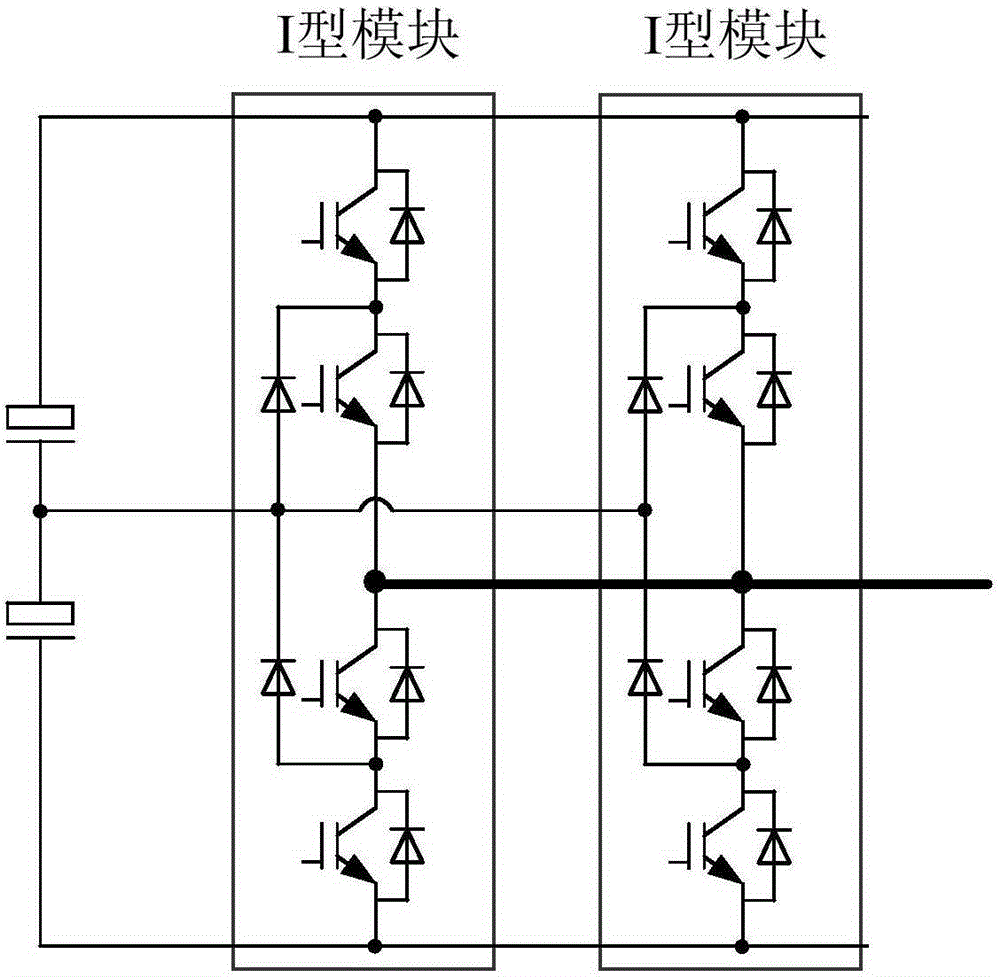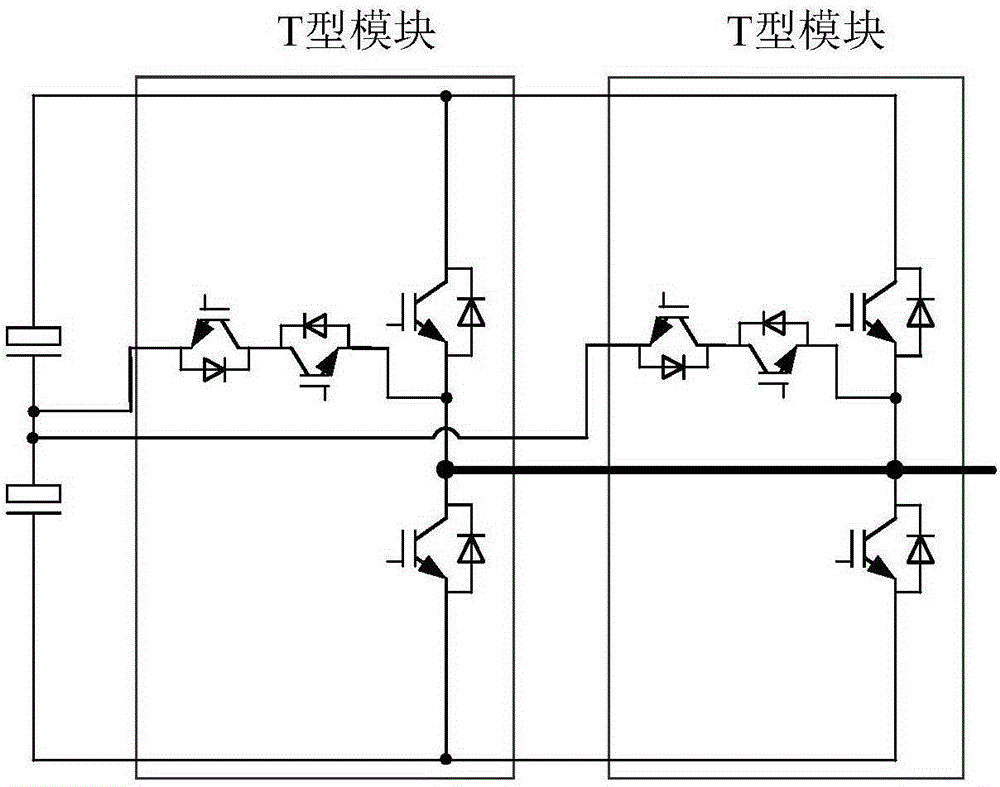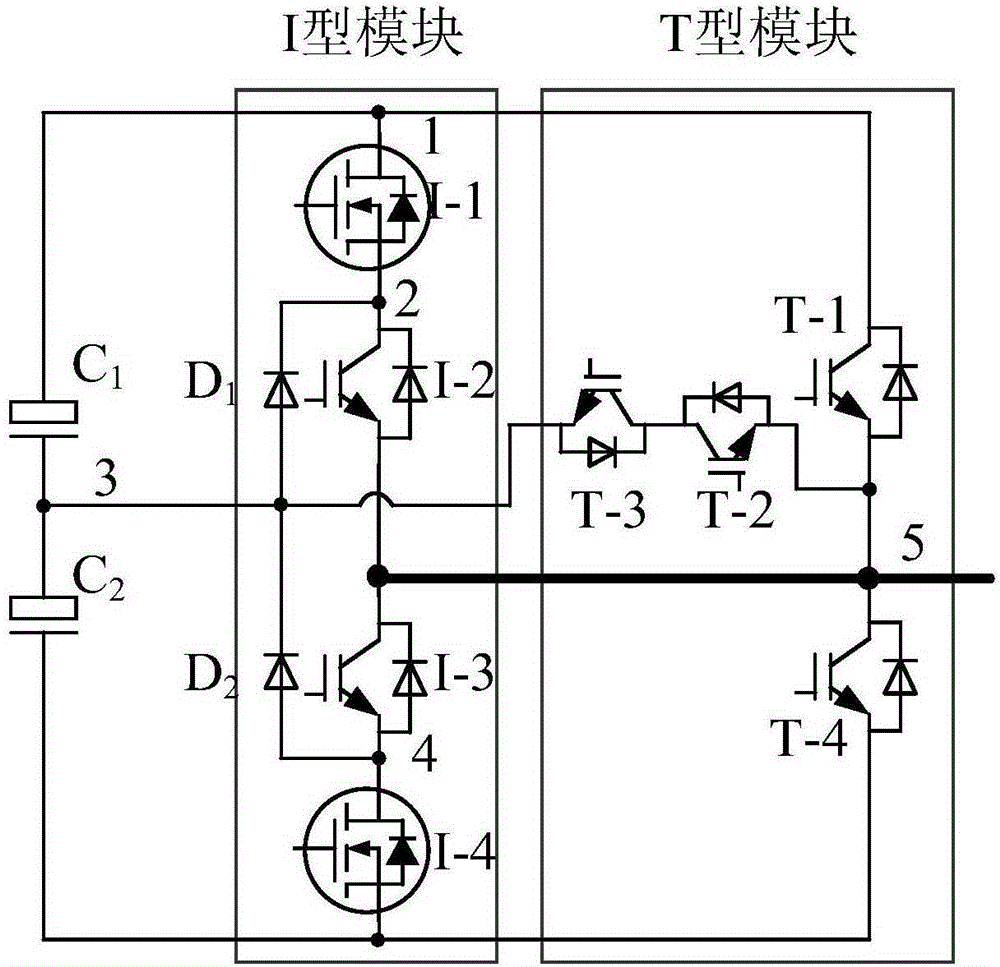Three-level module parallel structure and parallel method
A three-level, parallel technology, used in electrical components, output power conversion devices, and AC power input to DC power output, etc., can solve the problems of high conduction loss and low switching loss, and reduce conduction loss. Large, reduce switching loss, avoid the effect of large switching loss
- Summary
- Abstract
- Description
- Claims
- Application Information
AI Technical Summary
Problems solved by technology
Method used
Image
Examples
Embodiment 1
[0027] This embodiment describes in detail the parallel connection structure of the three-level modules of the present invention. Its structural diagram is as figure 2 As shown, it includes: a parallel unit, and the parallel unit is composed of I-type three-level bridge arms and T-type three-level bridge arms connected in parallel.
[0028] In different embodiments, the number of parallel units can be one or more.
[0029] In this embodiment, there are 6 IGBTs (I-2, I-3, T-1, T-2, T-3, T-4), 2 CoolMosfets (I-1, I-4), and 2 power Diode (D 1 、D 2 ) and 2 capacitors (C 1 、C 2 )composition.
[0030] like figure 2 As shown, node 1 is connected to C 1 The anode of I-1, the drain of T-1; node 2 connects the source of I-1, the drain of I-2, D 1 node 3 (neutral point) connects the cathode of C1, the anode of C2, the anode of D1, the cathode of D2, the source of T-3; the node 4 connects the anode of D2, the source of I-3, I- The drain of 4; the node 5 is connected to the sou...
Embodiment 2
[0033] This embodiment takes three parallel units as an example, such as image 3 As shown, three parallel units are connected in parallel to each other to form a parallel module, and the parallel module is connected to a CPU, and the CPU controls the working process of the parallel module through PWM control technology.
[0034] In this embodiment, node 1 is connected to the drain of I-1 in the three bridge arms, the drain of T-1 in the three bridge arms, the anode of C1, and the positive pole of the voltage source; node 2 is connected to the three bridge arms The neutral point N1, N2, N3 in, wherein the device that each neutral point connects has detailed description in embodiment 1; Node 3 connects the source pole of I-4 in the three bridge arms, in the three bridge arms The drain of T-4, the cathode of C2, and the negative pole of the voltage source.
[0035] The outputs a, b, and c of the three bridge arms can be filtered to obtain three-phase alternating current.
[00...
Embodiment 3
[0039] This embodiment describes in detail the method for parallel connection of three-level bridge arms of the present invention, which includes the following steps:
[0040] S11: Control the I-type three-level bridge arm to open and then close to realize the soft switch of the upper and lower high-voltage tubes of the T-type three-level bridge arm;
[0041] S12: When the three-level bridge arm becomes stable, the I-type three-level bridge arm and the T-type three-level bridge arm are connected in parallel to form a current channel.
[0042] In this embodiment, the soft switching of the upper and lower high-voltage tubes of the T-type three-level bridge arm is realized by controlling the I-type three-level bridge arm to open first and then close, thereby avoiding the disadvantage of large switching loss of the T-type three-level bridge arm. On the other hand, when the bridge arm becomes stable, the I-type three-level bridge arm and the T-type three-level bridge arm are connec...
PUM
 Login to View More
Login to View More Abstract
Description
Claims
Application Information
 Login to View More
Login to View More - R&D
- Intellectual Property
- Life Sciences
- Materials
- Tech Scout
- Unparalleled Data Quality
- Higher Quality Content
- 60% Fewer Hallucinations
Browse by: Latest US Patents, China's latest patents, Technical Efficacy Thesaurus, Application Domain, Technology Topic, Popular Technical Reports.
© 2025 PatSnap. All rights reserved.Legal|Privacy policy|Modern Slavery Act Transparency Statement|Sitemap|About US| Contact US: help@patsnap.com



